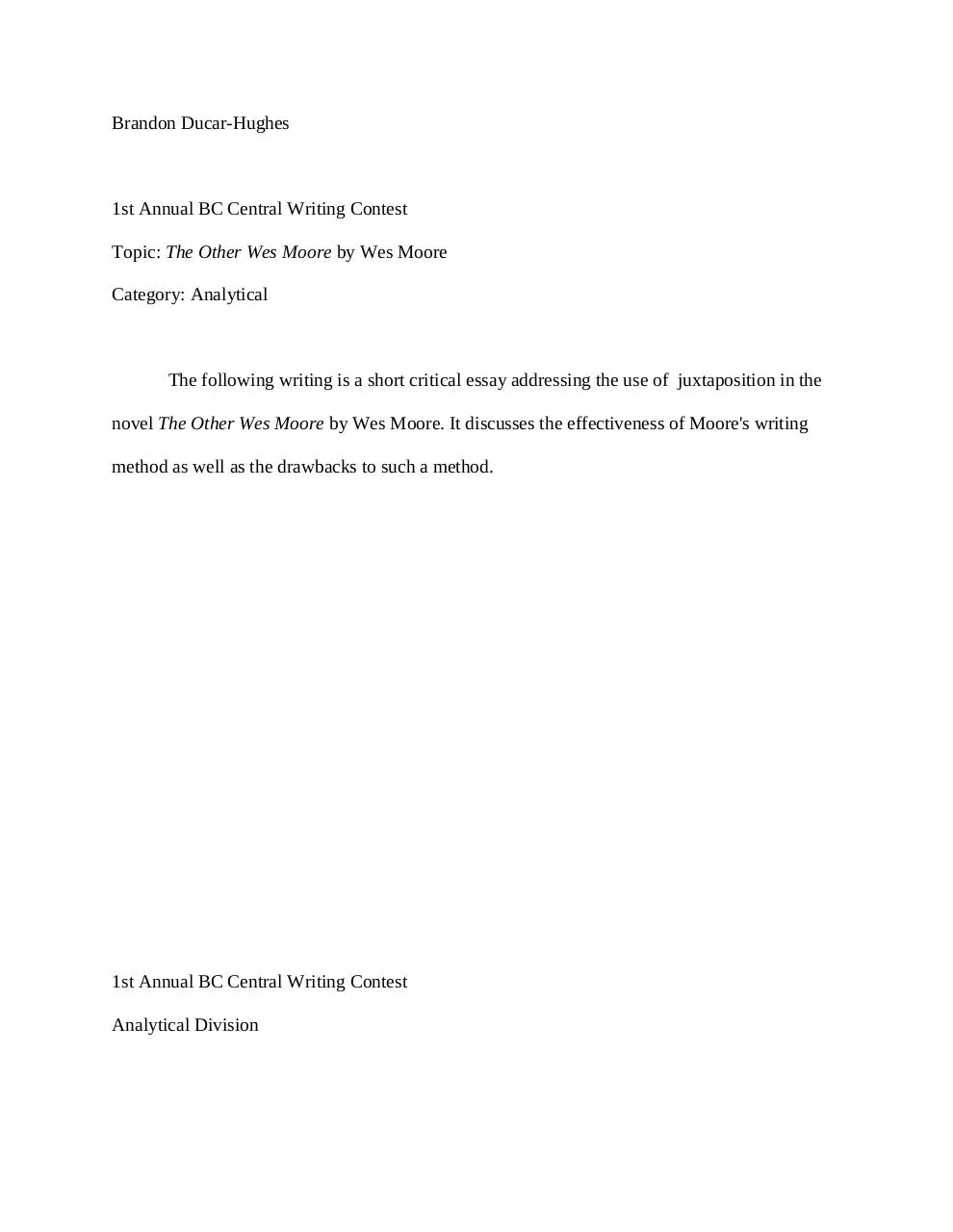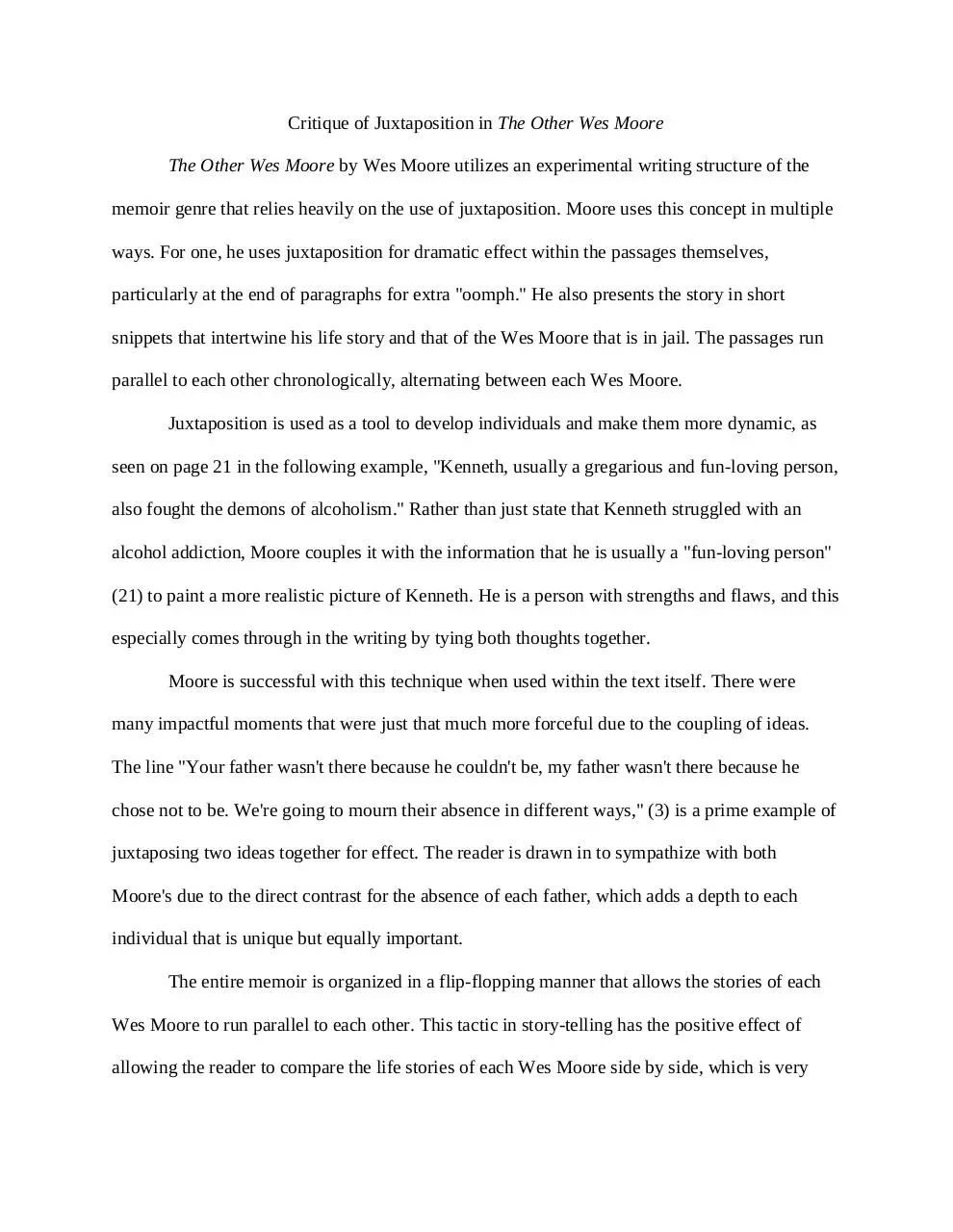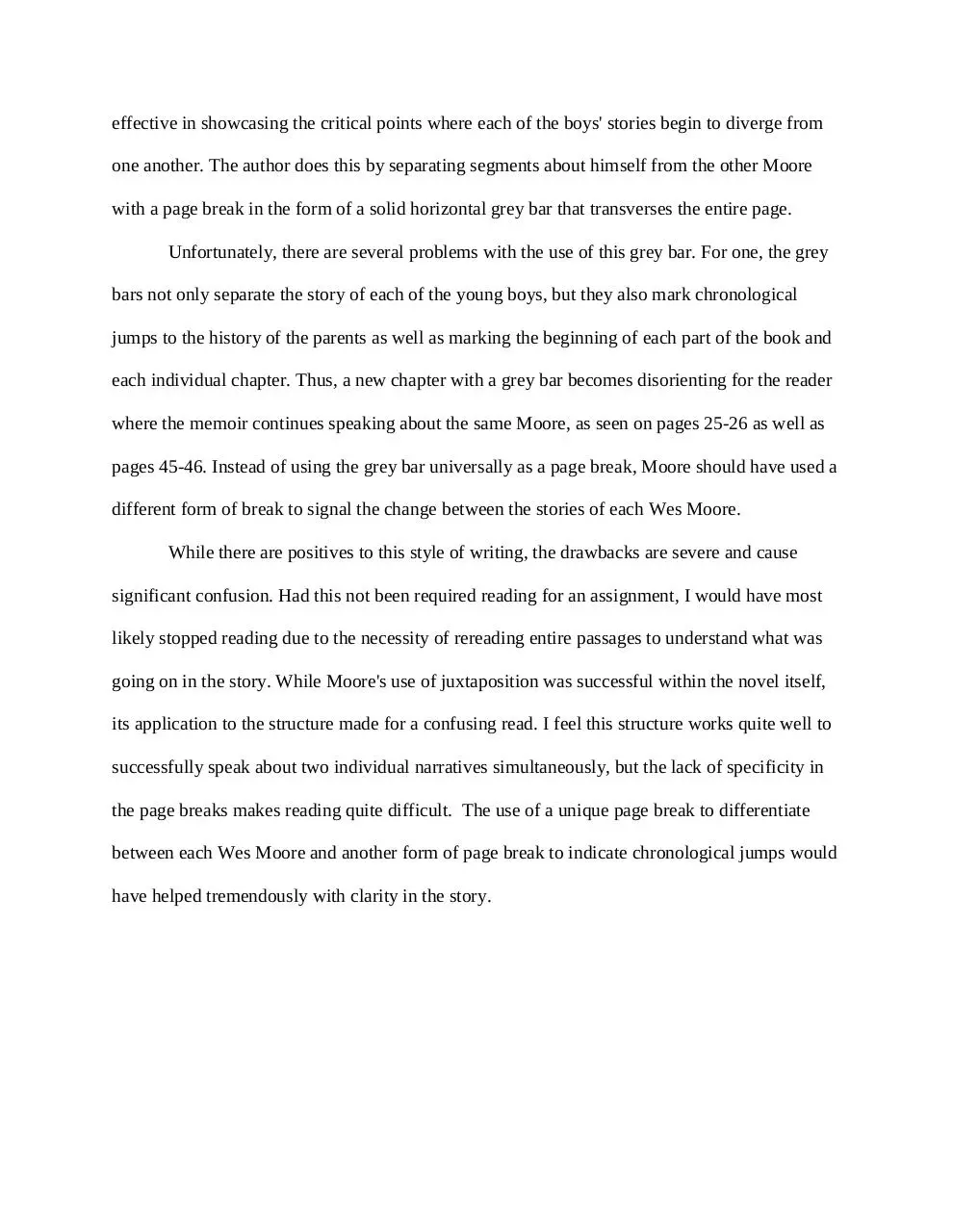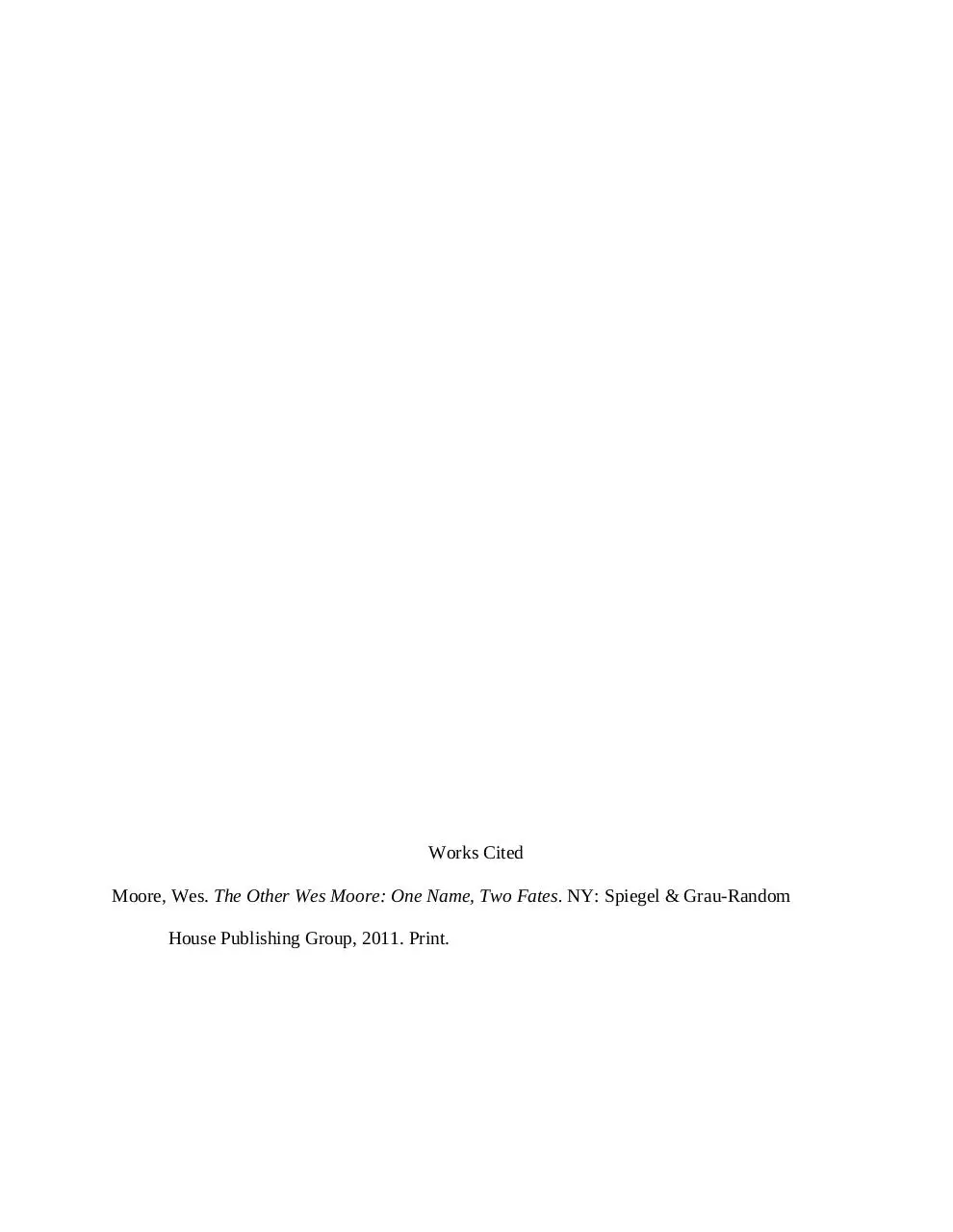Brandon Ducar (PDF)
File information
Title: Analytical Essay
Author: Brandon Ducar-Hughes
This PDF 1.5 document has been generated by Microsoft® Word 2013, and has been sent on pdf-archive.com on 29/04/2016 at 17:39, from IP address 209.87.x.x.
The current document download page has been viewed 553 times.
File size: 13.42 KB (4 pages).
Privacy: public file




File preview
Brandon Ducar-Hughes
1st Annual BC Central Writing Contest
Topic: The Other Wes Moore by Wes Moore
Category: Analytical
The following writing is a short critical essay addressing the use of juxtaposition in the
novel The Other Wes Moore by Wes Moore. It discusses the effectiveness of Moore's writing
method as well as the drawbacks to such a method.
1st Annual BC Central Writing Contest
Analytical Division
Critique of Juxtaposition in The Other Wes Moore
The Other Wes Moore by Wes Moore utilizes an experimental writing structure of the
memoir genre that relies heavily on the use of juxtaposition. Moore uses this concept in multiple
ways. For one, he uses juxtaposition for dramatic effect within the passages themselves,
particularly at the end of paragraphs for extra "oomph." He also presents the story in short
snippets that intertwine his life story and that of the Wes Moore that is in jail. The passages run
parallel to each other chronologically, alternating between each Wes Moore.
Juxtaposition is used as a tool to develop individuals and make them more dynamic, as
seen on page 21 in the following example, "Kenneth, usually a gregarious and fun-loving person,
also fought the demons of alcoholism." Rather than just state that Kenneth struggled with an
alcohol addiction, Moore couples it with the information that he is usually a "fun-loving person"
(21) to paint a more realistic picture of Kenneth. He is a person with strengths and flaws, and this
especially comes through in the writing by tying both thoughts together.
Moore is successful with this technique when used within the text itself. There were
many impactful moments that were just that much more forceful due to the coupling of ideas.
The line "Your father wasn't there because he couldn't be, my father wasn't there because he
chose not to be. We're going to mourn their absence in different ways," (3) is a prime example of
juxtaposing two ideas together for effect. The reader is drawn in to sympathize with both
Moore's due to the direct contrast for the absence of each father, which adds a depth to each
individual that is unique but equally important.
The entire memoir is organized in a flip-flopping manner that allows the stories of each
Wes Moore to run parallel to each other. This tactic in story-telling has the positive effect of
allowing the reader to compare the life stories of each Wes Moore side by side, which is very
effective in showcasing the critical points where each of the boys' stories begin to diverge from
one another. The author does this by separating segments about himself from the other Moore
with a page break in the form of a solid horizontal grey bar that transverses the entire page.
Unfortunately, there are several problems with the use of this grey bar. For one, the grey
bars not only separate the story of each of the young boys, but they also mark chronological
jumps to the history of the parents as well as marking the beginning of each part of the book and
each individual chapter. Thus, a new chapter with a grey bar becomes disorienting for the reader
where the memoir continues speaking about the same Moore, as seen on pages 25-26 as well as
pages 45-46. Instead of using the grey bar universally as a page break, Moore should have used a
different form of break to signal the change between the stories of each Wes Moore.
While there are positives to this style of writing, the drawbacks are severe and cause
significant confusion. Had this not been required reading for an assignment, I would have most
likely stopped reading due to the necessity of rereading entire passages to understand what was
going on in the story. While Moore's use of juxtaposition was successful within the novel itself,
its application to the structure made for a confusing read. I feel this structure works quite well to
successfully speak about two individual narratives simultaneously, but the lack of specificity in
the page breaks makes reading quite difficult. The use of a unique page break to differentiate
between each Wes Moore and another form of page break to indicate chronological jumps would
have helped tremendously with clarity in the story.
Works Cited
Moore, Wes. The Other Wes Moore: One Name, Two Fates. NY: Spiegel & Grau-Random
House Publishing Group, 2011. Print.
Download Brandon Ducar
Brandon Ducar.pdf (PDF, 13.42 KB)
Download PDF
Share this file on social networks
Link to this page
Permanent link
Use the permanent link to the download page to share your document on Facebook, Twitter, LinkedIn, or directly with a contact by e-Mail, Messenger, Whatsapp, Line..
Short link
Use the short link to share your document on Twitter or by text message (SMS)
HTML Code
Copy the following HTML code to share your document on a Website or Blog
QR Code to this page

This file has been shared publicly by a user of PDF Archive.
Document ID: 0000366963.